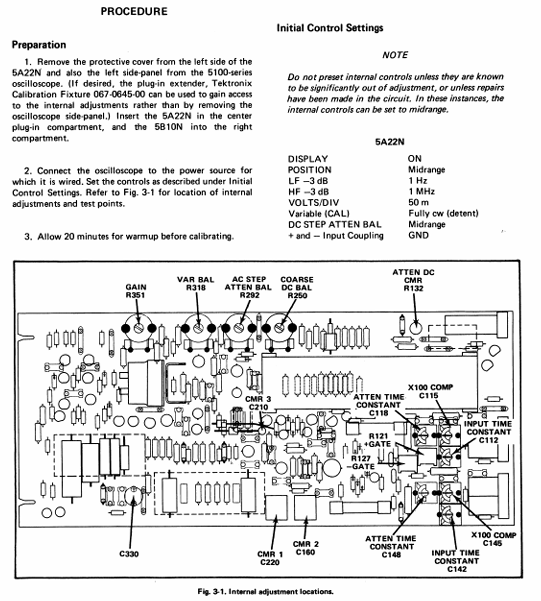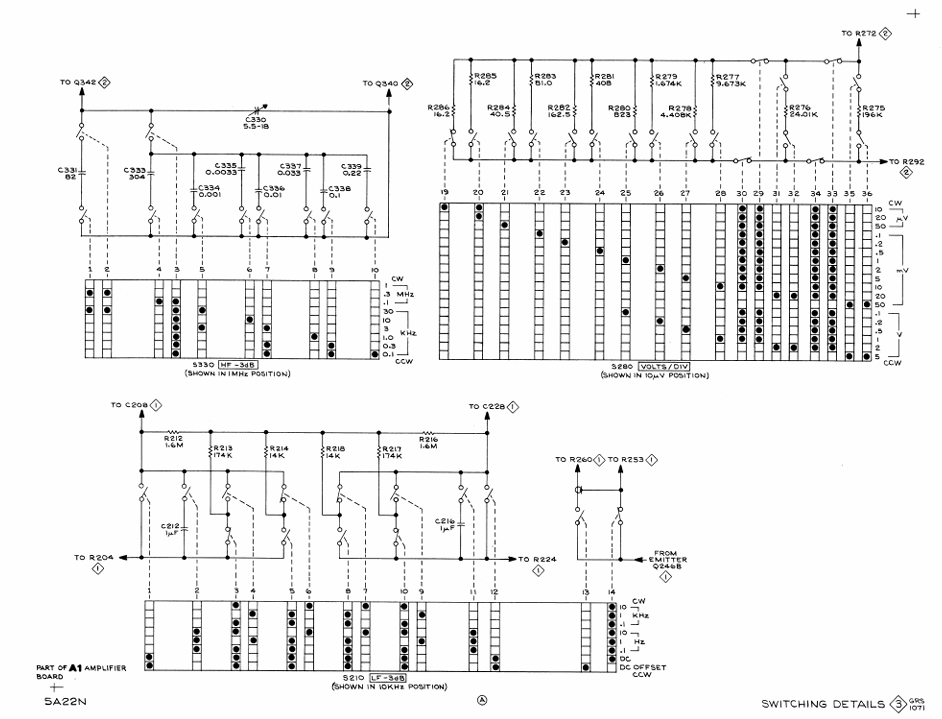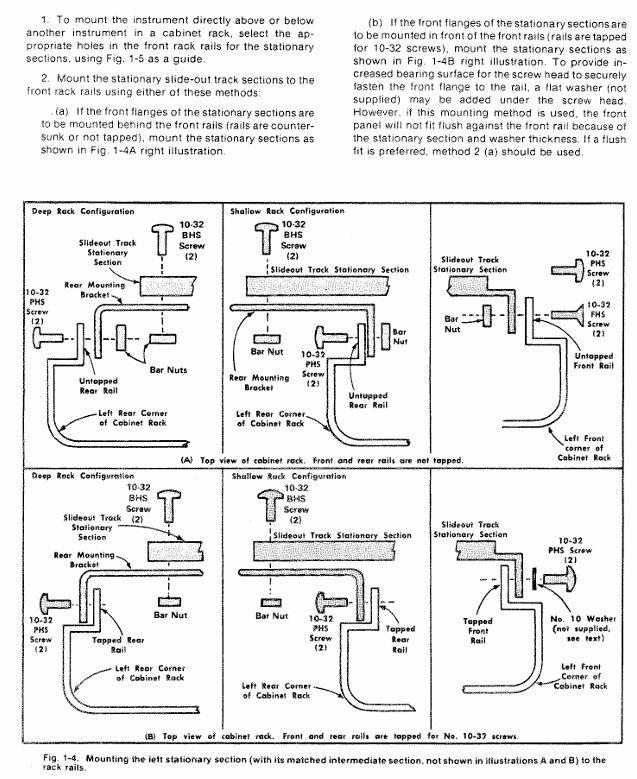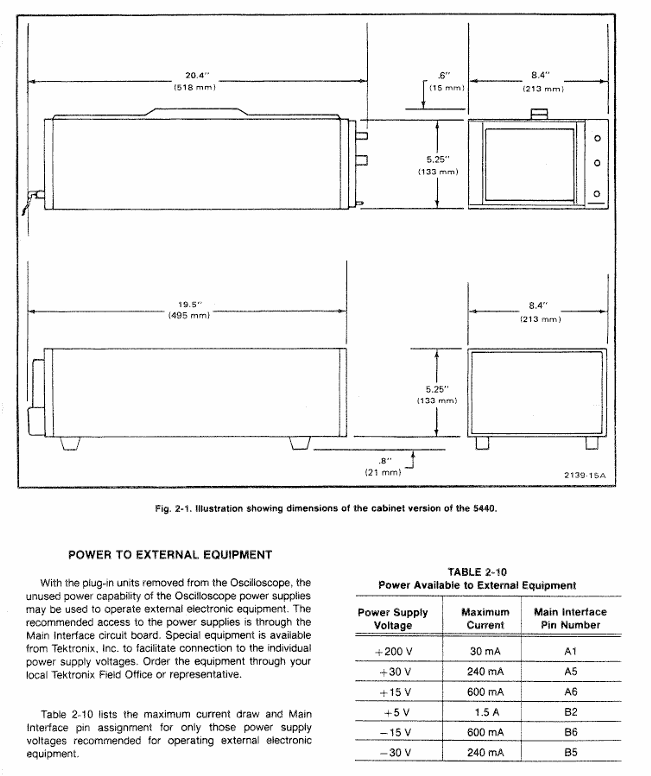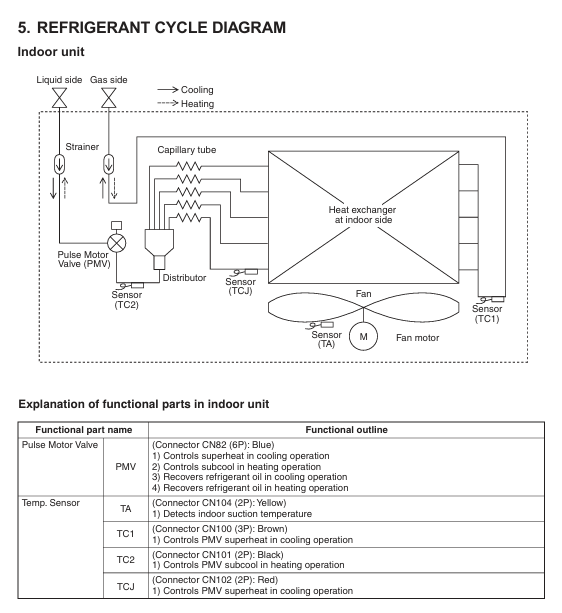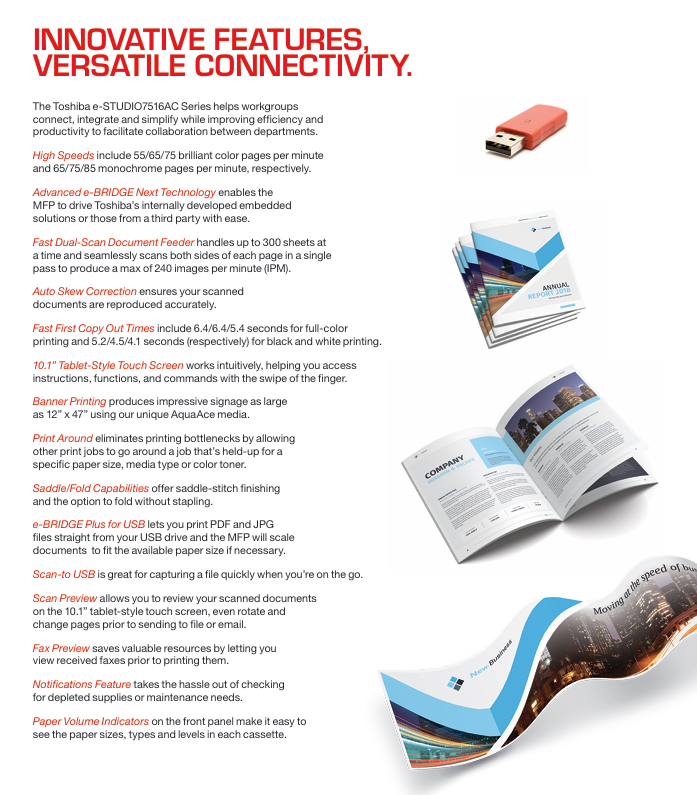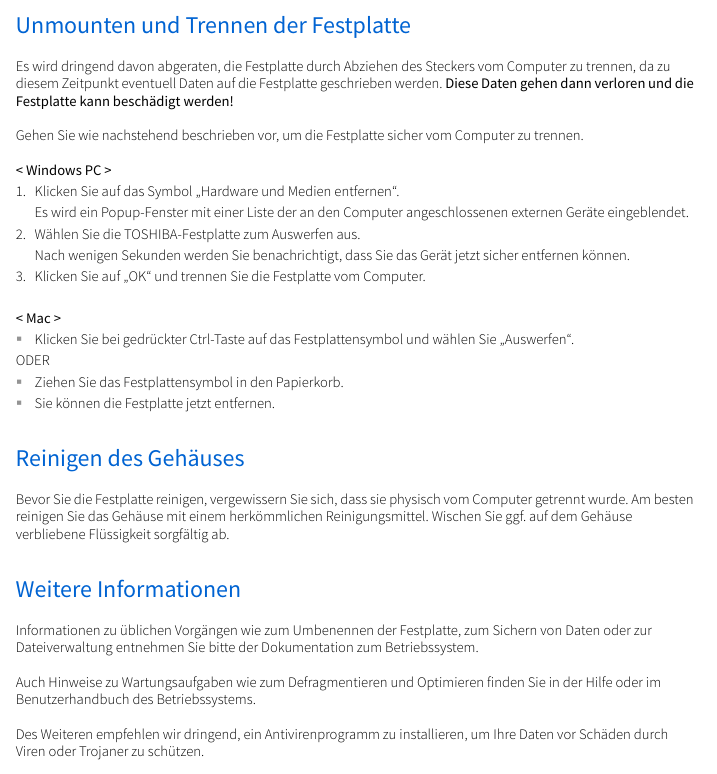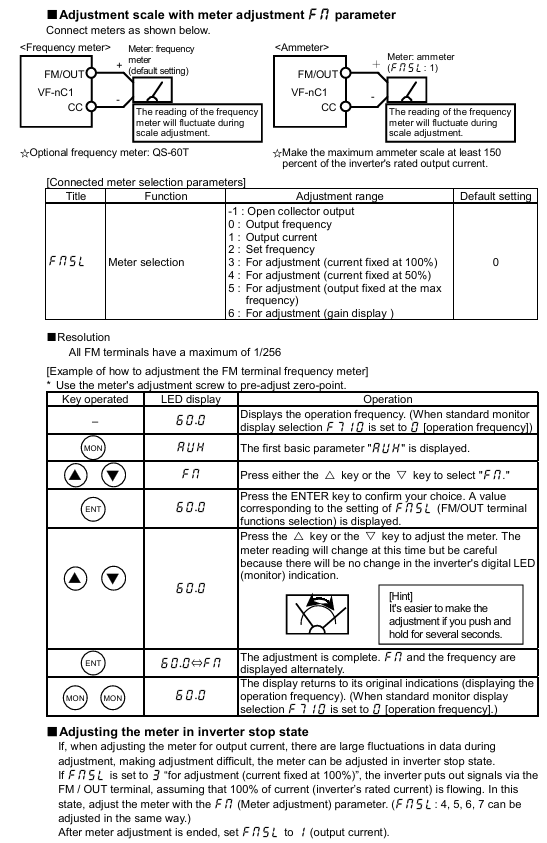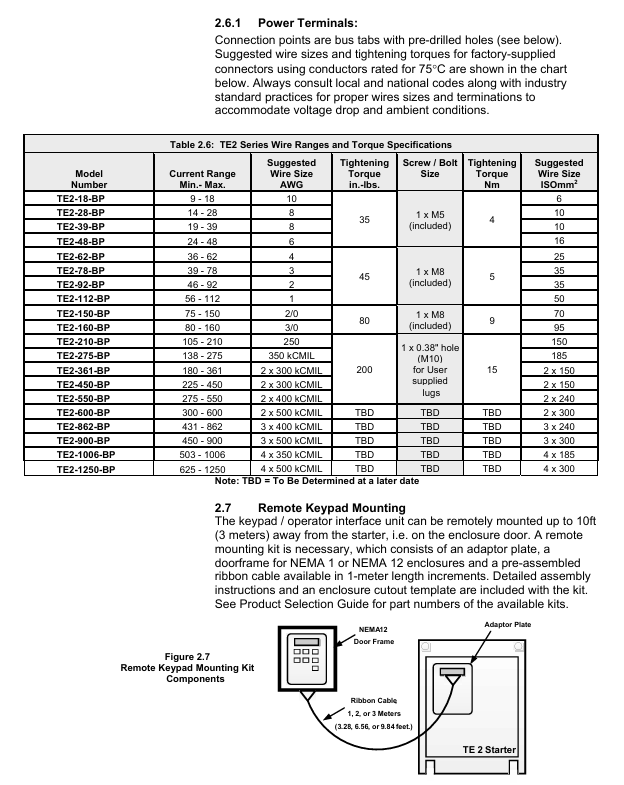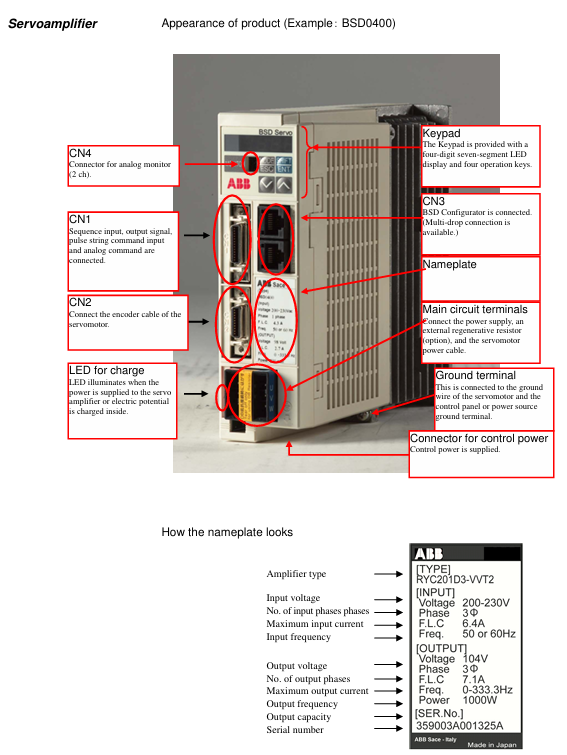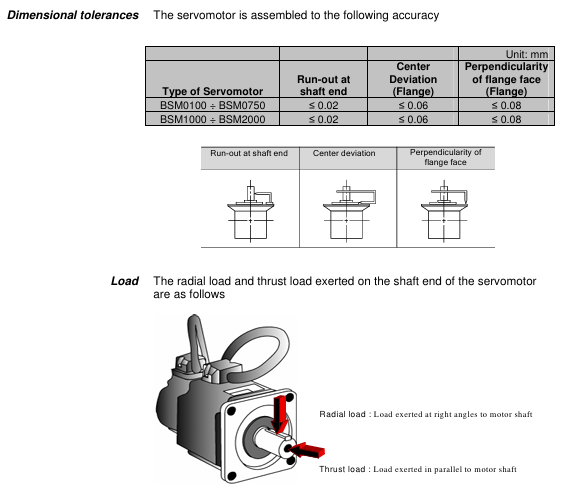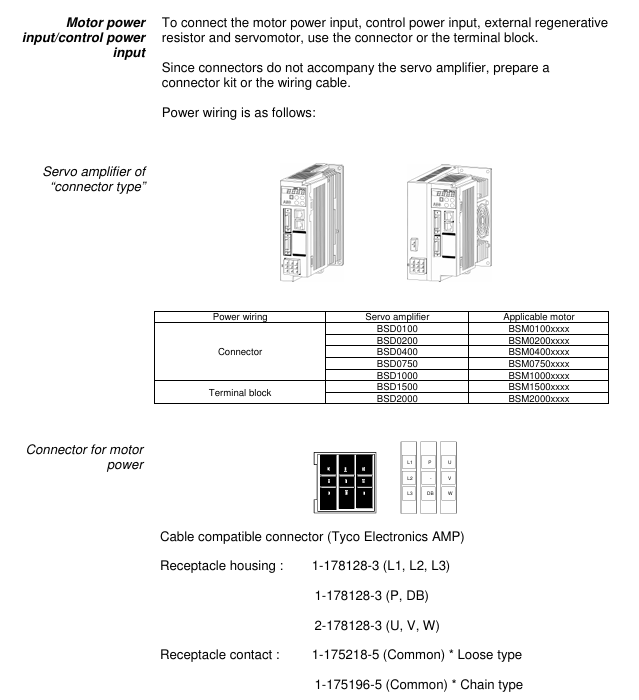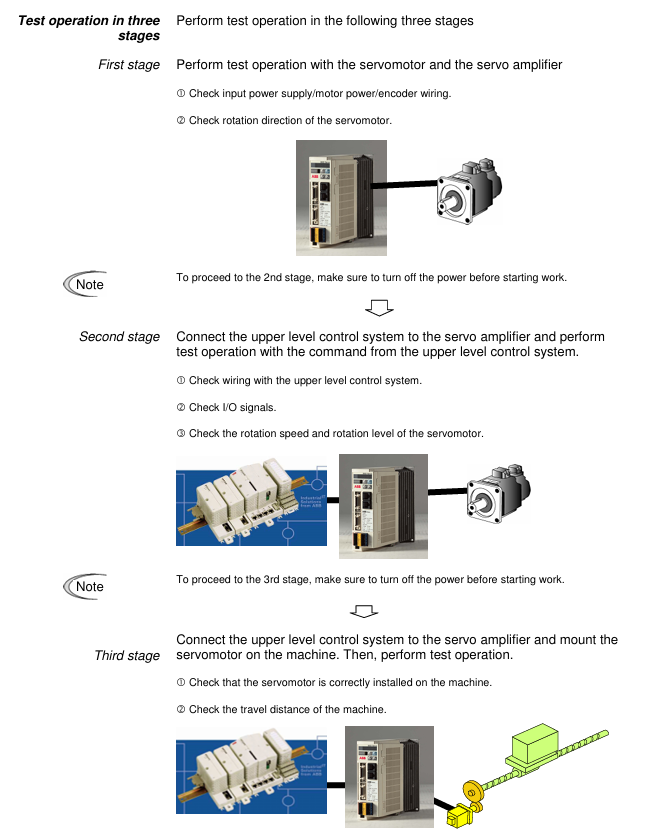TEKTRONIX 5B12N Dual Time Base Plugin
Core characteristics of the instrument and panel controls
1. Core characteristics of the instrument
Dual time base generator: including A time base (main time base) and B time base (auxiliary time base), supporting three working modes (independent sweep, dual sweep, delayed sweep).
Scanning speed range:
A time base: 1 μ s/Div to 5s/Div (21 levels 1-2-5 sequence), 10x magnification (A SWP MAG) to reach 100ns/Div;
B time base: 0.2 μ s/Div to 0.5s/Div (20 levels 1-2-5 sequence), no amplification function.
Delay function: Set the delay time using the DELAY TIME MULT knob, with a range of 0.2-10.2 times the A time base sweep speed (corresponding to 1 μ s to 50s), for delayed sweep mode.
External signal support: External signals can be connected to replace the A time base display, and the amplifier mode provides two calibration deflection coefficients of 50mV/Div and 0.5V/Div.
2. Key panel controls (function summary)
Control Category Control Name Function Description
Mode control MODE (A/B/dual sweep) – A: Only A time base works, B time base is locked
-B: Only B time base works, A time base is locked
-Dual sweep frequency (A+B pressed): A and B time bases work simultaneously, with time sharing display
A INTEN-B DLY’D Delay Sweep Mode Switch, to be coordinated with A/B buttons:
-Only press A: display A time base, B time base works synchronously (strengthened segment display)
-Only press B: B time base delay start (delay time is determined by A time base and DELAY TIME MULT)
-Press A+B: A time base strengthening segment and B time base delay display
B TRIG AFTER DLY is triggered after a delay in the B time base. It is necessary to first meet the delay time set by the A time base, and then activate the B time base with the trigger signal
Time base control A/B Seconds/DIV selects calibration scanning speed, and the knob skirt lights up to display the current gear (A is a dark gray knob, B is a light gray knob)
A SWP MAG A time base is amplified 10 times, and the scanning speed is directly displayed after amplification (such as 1 μ s/Div → 100ns/Div), with only the central grid area visible
DELAY TIME MULT delay multiple adjustment, range 0.2-10.2 times A time base sweep speed, used to locate the starting point of delayed sweep frequency
A SINGL SWP A Time Base Single Sweep Mode, only triggered once when pressed, requires A RESET reset
A RESET resets the sweep circuit: re standby in single mode, terminate the current sweep in any mode
Trigger Control A/B TRIGGERING Source – LEFT/RIGHT: Select the left/right vertical plugin as the trigger source
-COMPOSITE (exclusive to A): Select the display signal as the trigger source (press A+B)
-LINE: Select the power frequency (50/60Hz) as the trigger source
-EXT (unique to A): Select A EXT INPUT external signal as the trigger source
A/B TRIGGERING COUPLING – AC (pressed): Capacitive coupling, blocking DC, attenuating low frequencies<50Hz
-DC (pop-up): Direct coupling, retaining DC and low-frequency components
A/B TRIGGERING SLOPE -+SLOPE (pressed): Positive slope trigger (signal rising edge starts sweep frequency)
— SLOPE (pop-up): Negative slope trigger (signal falling edge initiates frequency sweep)
A/B TRIGGERING LEVEL adjusts the trigger level, and the ± region corresponds to the positive and negative voltage points of the signal. Rotate clockwise to increase the trigger level
Status and display READY INDICATOR indicator light, illuminated in A time base single mode to indicate readiness (trigger acceptable)
Display (ALT/CHOP) – ALT (pop-up): alternately displays A/B time base, suitable for fast scanning speed
-CHOP (pressed): Chopper displays A/B time base, suitable for scenarios with slow scanning speed or large scanning speed differences
INTEN BAL balances the brightness of A and B time base trajectories for clear observation or photography in dual sweep mode

Working mode and operation process
1. Three core working modes
Mode name trigger condition applicable scenario key operation steps
Independent sweep mode (A or B works separately) – Normal trigger (AUTO TRIG pops up): The trigger signal must be ≥ 15Hz and the LEVEL must be correct
-Automatic trigger (AUTO TRIG pressed): Free operation at<15Hz or no trigger (baseline illuminated)
-Single trigger (A SINGL SWP pressed): Only 1 sweep frequency, A RESET is required to reset the regular time measurement of simple signals, non repetitive signal photography 1. Press the A or B button of MODE
2. Choose TRIGGERING SOURCE-COUPLING/SLOPE
3. Adjust LEVEL to stable display, press A RESET for standby in single mode
Dual sweep mode (A+B working simultaneously) A trigger source corresponds to the left vertical plugin, B trigger source corresponds to the right vertical plugin, and trigger parameters need to be set separately to observe two signals (or different scan speeds of the same signal) simultaneously. 1. Press the A+B button of MODE
2. Set the PLAY to ALT (fast scanning speed) or CHOP (slow scanning speed)
3. Adjust the Seconds/DIV and trigger parameters of A/B separately, and use INTERN BAL to balance the brightness
Delay sweep mode (B time base delay start): After triggering A time base, start B time base (or wait for triggering after B time base delay) signal local amplification, time difference measurement, pulse jitter measurement. 1. Press the A INTEN-B DLY’D button of MODE (in conjunction with A/B)
2. Set A Seconds/DIV (delay benchmark) and DELAY TIME MULT (delay multiplier)
3. Adjust the B Seconds/DIV (delayed sweep speed) to be faster than the A time base to avoid logic errors
2. Sweep frequency amplification operation (taking 100x amplification as an example)
Preparation for dual sweep mode: Press the A+B button, connect the left/right vertical plugs to the same signal, set A Seconds/DIV to 0.1ms/Div (display complete waveform);
Delay mode start: Press A INTEN-B DLY’D and use DELAY TIME MULT to locate the enhanced segment to the pulse that needs to be amplified;
B time base setting: B Seconds/DIV is set to 1 μ s/Div (1/100 of A scan speed), and at this time B time base displays a 100x amplified waveform of A time base enhancement segment;
Calculate magnification factor:
Magnification factor=B Seconds/DIV settings
A Seconds/DIV setting= 1×10 −60.1×10 −3=100
4、 Application scenarios and examples
1. Time difference measurement (interval between two pulses)
Signal access: The left/right vertical plug-in is connected to a signal containing two pulses, in dual sweep mode (A+B pressed), with Volts/Div set to 2 grid amplitudes;
A Time Base Setting: A Seconds/DIV is set to 0.2m/Div (displaying the multi grid distance between two pulses), and the trigger parameter is adjusted to stable display (using CHOP mode for slow scanning speed);
Delay mode start: Press A INTEN-B DLY’D, set B Seconds/DIV to 2 μ s/Div (1/100 of A scan speed), and strengthen the segment length by about 0.1 grid;
Delay positioning: DELAY TIME MULT first locates the rising edge of the first pulse (reading 1.31), and then locates the second pulse (reading 8.81);
Calculate time difference:
Time difference=(8.81-1.31) × 0.2ms=1.5ms
.
2. Pulse jitter measurement
Signal access: Left/right vertical plug-in access pulse signal, dual sweep frequency mode, Volts/Div set to 4 grid amplitude;
A Time Base Setting: A Seconds/DIV is set to display the complete waveform, and the trigger parameters are adjusted to stability;
Delay mode start: Press A INTEN-B DLY’D, DELAY TIME MULT locate the pulse to be tested, and set B Seconds/DIV to 0.2 μ s/Div (covering the pulse front);
Jitter calculation: observe the horizontal offset of the pulse in the B time base (example 0.5 grid),
Jitter=0.5 × 0.2 μ s=0.1 μ s
Electrical characteristics (core parameters)
Specific parameter accuracy/range for characteristic category
A time base scanning speed calibration range: 1 μ s/Div-5s/Div (21 levels); 100ns/Div 1 μ s/Div-1s/Div after 10x magnification: ± 3%; 2s/Div-5s/Div:±4%; Enlarged+1%
Non calibrated range: continuously adjustable, extending up to 12.5/s Div-
B time base scanning speed calibration range: 0.2 μ s/Div-0.5s/Div (20 levels) 1 μ s/Div-0.1s/Div: ± 3%; 0.2 μ s/Div, 0.5 μ s/Div, 0.2 s/Div, 0.5 s/Div: ± 4%
Delay characteristics: Delay multiple: 0.2-10.2 times A time base scanning speed (1 μ s-50s) 1 μ s/Div-0.5s/Div: ± 1%; 1s/Div-5s/Div:±2%
Inherent latency: ≤ 500ns-
Delay jitter: ≤ 1/20000 × 10x A time base scanning speed-
Trigger characteristic internal trigger (DC coupling): ≥ 0.4 grid (DC-1MHz); ≥ 0.6 grid (2MHz)-
External trigger (A time base): ≥ 200mV (DC-2MHz) Input RC: 1M Ω± 2%//70pF
Maximum safe input voltage: 350V (DC+peak AC)-
Amplifier mode deflection coefficient: 50mV/Div, 0.5V/Div ± 3%
Bandwidth: DC – ≥ 1MHz (AC coupling 50Hz – ≥ 1MHz)-
Non calibration range: ≥ 10:1 attenuation-



